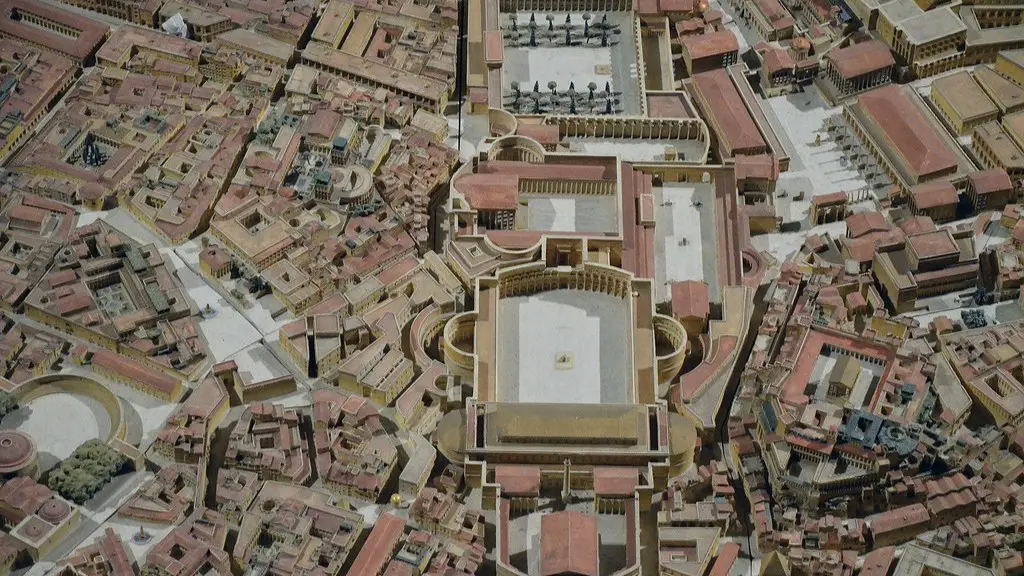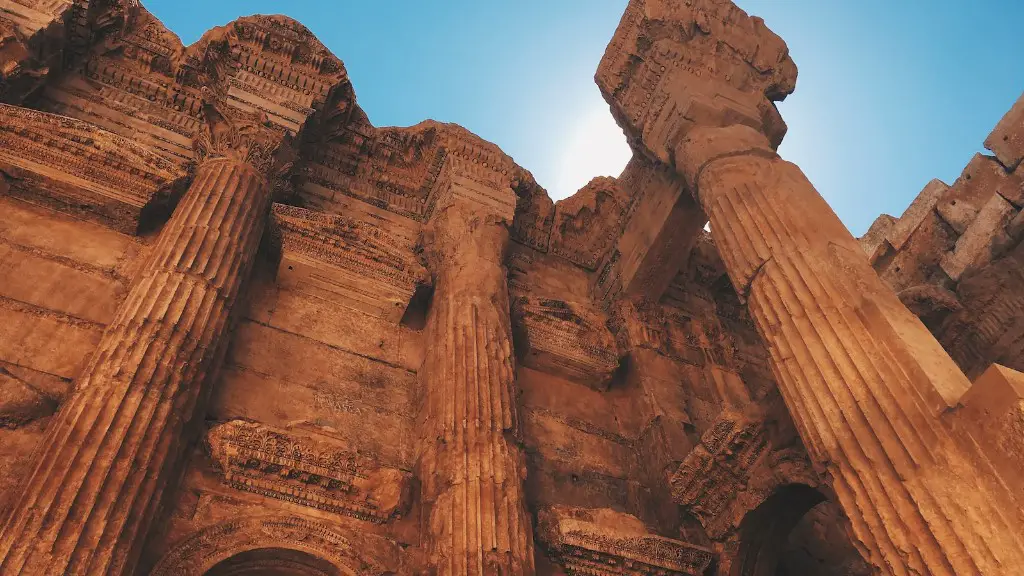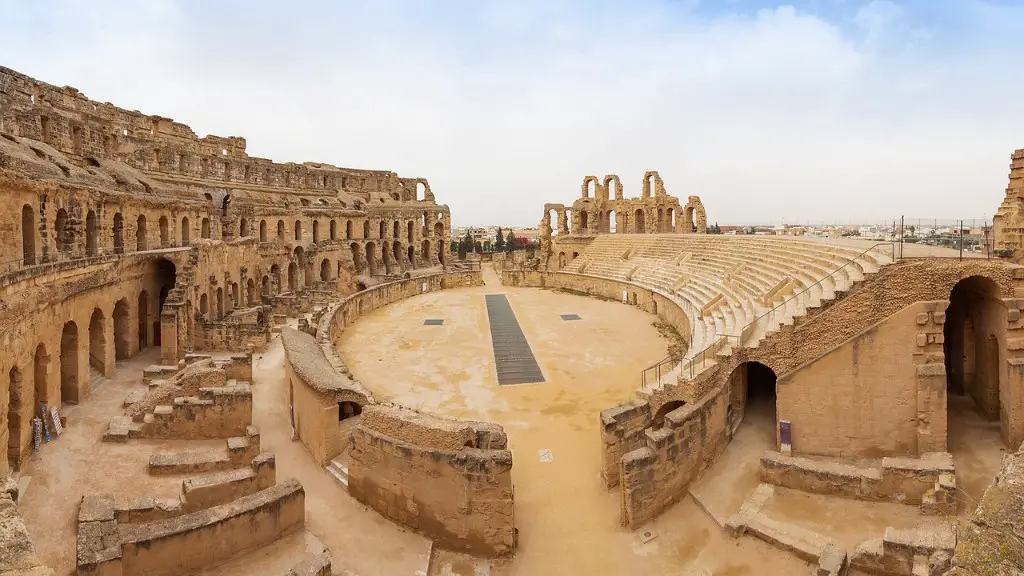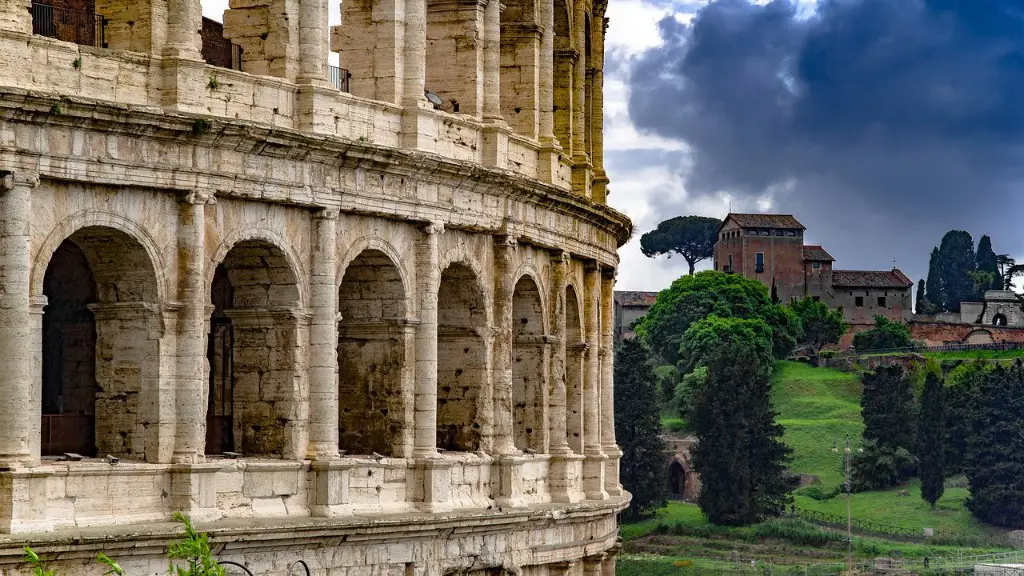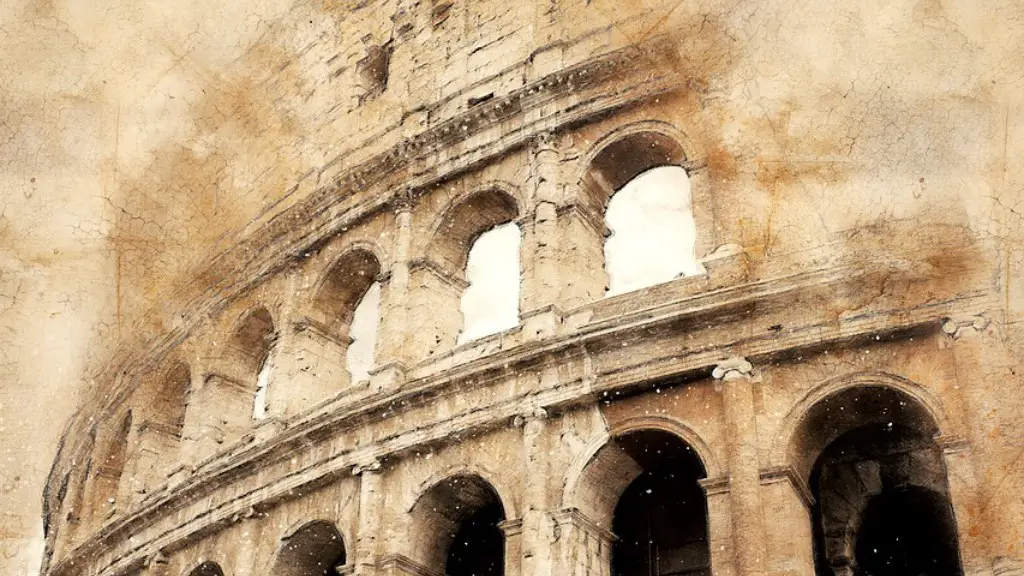When did Ancient Rome Have the Most Wealth?
Ancient Rome was a financially successful superpower in the early centuries AD, however when exactly was the height of their wealth? Through examining the coins, infrastructure, and government buildings, many experts agree that the peak of Rome’s affluence was during the early part of the 2nd century AD. This period of time is often referred to as the “Golden Age” of Rome.
The most significant contributing factor to Rome’s financial success was their economy. To start, Rome had a successful agricultural system that was able to generate an abundance of food and goods for trading. This, along with the enforcement and imposition of new taxes, transformed the state into a money-making machine. Furthermore, trade and commerce during this period played a key role in their wealth, primarily through increased export and import of goods. In addition, many jobs such as trade, manufacturing, and military were a major source of income for Rome. All of these aspects combined allowed the Roman Empire to increase their resources and amass a great degree of wealth.
Still, the government spent money on much more than just the economy. Infrastructure both within the cities and abroad was improved and extended with great public works programs. Major buildings like the Colosseum, the Pantheon, baths, and aqueducts also added to the imperial splendor of Rome and likely added to the wealth of the empire significantly. The cost of these projects was likely offset by taxes and the spoils of their military conquests.
Political and military successes also played a major factor in Rome’s wealth. In fact, the expansion of the Roman Empire was likely one of the main attractions for citizens, leading to more acquisition of land, goods, and money. The increase in colonies and provinces meant more taxes, more citizens, and more goods for Rome, strengthening the economy and creating a stronghold of wealth for the population as a whole.
When examining the size and scope of Rome’s economic success, the evidence seems to suggest that the 2nd century was the peak of the grandeur of Ancient Rome. From an abundant agricultural system to military and political successes, Rome was able to amass a great wealth. Although the fate of the Roman Empire eventually changed, its peak of wealth during the 2nd century AD is a testament to the power and potential of Ancient Rome.
The Effects of Over-Taxing on Ancient Rome
The main source of funding for the successes of Ancient Rome was the implementation of taxes. While taxes helped to fund much of the infrastructure and public works that added to the grandeur of the Roman Empire, the financial success of Rome also came at a cost. Many experts point to the exorbitant and oppressive taxation imposed by the Roman government as one of the leading causes of the eventual fall of Rome.
The Roman government used taxes to pay for their various public works and military invasions, but they often times allowed corporate entities and wealthy citizens to have drastically reduced tax rates. This allowed these elites to not only amass large amounts of wealth, but to also remain politically powerful. For example, Roman senators and government officials often became extremely wealthy while passing decrees to fund their projects, but doing little to help the lower classes of Rome. This growing inequality within the Roman Empire plagued the citizens and eventually contributed to their demise.
The taxation system of Ancient Rome also had serious implications on their economy. By taxing the citizens, especially the lower classes, greatly and not allowing a welfare system, it stunted the growth of Rome’s economy by leaving the people with less money to spend. As a result, trade was slowed and people were unable to buy goods from other provinces, leading to a decrease in the wealth of Rome. This, combined with the unequal taxation system and inflation of currency, eventually led to the fall of Rome and the eventual elimination of their power.
The evidence suggests that the main cause of Rome’s downfall was the over-taxation of their citizens and the the lack of economic equality. These issues caused the people of Rome to be unable to pay the taxes needed to support their public works and the infrastructure of their cities and country. Consequently, Rome’s great wealth began to dwindle and the Roman Empire eventually collapsed.
Rome’s Contributions to Modern Economy
The economy of Ancient Rome was a major contributor to the Roman Empire’s success and has current day implications and relevance. In fact, many economic concepts Roman citizens used are still in use today and have shaped the way people think about money and finance. For example, the financial institutions and the wages of Roman citizens were the main sources of money for the empire, with wages at the time varying considerably. The concept of a living wage is still something that is heavily discussed in modern economics.
In addition to money management and wages, Roman government officials also had a great influence on modern economics. The Roman Republic is largely responsible for the early stages of the concept of money and bartering. They also expanded on the notion of contract law and regulations, contributing to aspects of modern day business organizations. In particular, their legal system allowed for more people to invest in organizations and ideas and the laws of majority rule allowed all citizens to have an equal say in the Roman government.
Furthermore, the infrastructure projects, public works, and investments of Ancient Rome paved the way for modern day financial practices. The Roman government put their money to good use through their public works, leading to the construction of roads and aqueducts that are still in use today. In addition, their investments in the economy through trading and commerce was a major step in the financial development of the world, changing the way economics is understood.
Clearly, the wealth of Ancient Rome has had a lasting impact on the world. From their taxation systems to their contributions to modern economics, the Roman Empire’s influence is still felt today. It is important to remember the practices of Ancient Rome and the implications of their financial successes in order to gain a more comprehensive understanding of economics today.
The Legacy of Ancient Rome’s Wealth
Ancient Rome’s wealth played a major role in shaping the legacy of the Roman Empire. The wealth acquired through taxation and trade allowed Rome to improve the many aspects of their empire and to become a financial superpower. From their public works programs to their various regulations and laws, their wealth was a tool they used to increase the grandeur and presence of Rome around the world.
The wealth of the Roman Empire was also used to foster a culture of acceptance. By allowing trading with foreign nations and allowing citizens of neighbouring countries to become Roman citizens, the Roman Empire increased its level of prestige and influence in many parts of the world. Furthermore, the wealth allowed for large-scale public works programs that enriched the lives of those living in Rome. The citizens of the empire were able to live better lives, creating an incentive for many people from neighbouring lands to join the Roman Empire.
In addition, much of Rome’s art and culture was also commended in large part to the wealth of the Roman Empire. The affluent long-lasting nature of the Roman Empire allowed for its culture to be appreciated and enjoyed by many people. From its art and literature to its philosophy and architecture, the legacy of Ancient Rome is still felt today. Without the wealth that the treasury acquired, much of the culture and accomplishments of the Roman Empire would not have been possible.
Ancient Rome’s wealth was the engine that drove the success of the Roman Empire. From their infrastructure, public works programs, and investments, the wealth was essential to the success and influence of Ancient Rome throughout its history. Without their wealth, much of the accomplishments of the Roman Empire would unlikely have been possible.
The Value of Ancient Roman Wealth Today
The wealth of Ancient Rome had a huge influence on their success and is still relevant and appreciated today. Recent archeological findings have enabled historians to explore the past and uncover the many treasures of Ancient Rome. Coins, monuments, and other artifacts from the Roman Era are now found in a variety of locations and are priceless to the people who have discovered them.
In addition, the value of Ancient Rome’s wealth remains relevant in the contemporary world. For example, the advances in trade, government, and banking during the Roman Era are all still noticeable in today’s financial system. Ancient Roman coins, many of which have survived the centuries, can now be seen as valuable collector’s items and are bought and sold like art. The symbolism, extravagance, and stories of these coins make them prized possessions among collectors.
Lastly, the impact of Ancient Roman wealth can also be seen in current day culture. There are still clothing and home decor pieces derived from Ancient Rome and many of their design elements are still used in modern day design. Similarly, the art and architecture of Rome can still be seen all over the world today and is appreciated for its influence on the contemporary world. Ancient Rome’s wealth and influence still affects design and culture in a huge way.
The wealth of Ancient Rome had a vast impact on their own history, but also on the world today. The many tangible relics from the Ancient Roman era, as well as the influence of the Roman Empire on modern day culture, are all testament to the power and grandeur of Ancient Rome and the value of their wealth.
What Ancient Rome Teaches Us About Wealth
There is a lot that can be learned from Rome’s financial success, both by modern day nations and by individual citizens. The most important message of Ancient Rome’s wealth is that it should be used responsibly in order to ensure long-term success. This can be done in a variety of ways, such as investing in public works, public services, infrastructure, and military conquests, or providing citizens with a welfare system to encourage spending and growth of the economy. Investing in these projects can help ensure long-term success, as well as promoting equality among citizens.
Furthermore, Ancient Rome’s success also shows us that money should be earned responsibly. This means that utilizing fair taxation, investing in diverse trading partnerships, and focusing on productivity all lead to stable economic systems. Rome was able to increase their wealth through numerous avenues, including agriculture, investments, and trading. All of these elements work together to create a powerful nation.
Lastly, Ancient Rome’s financial successes also taught us that although money is important, it is not necessarily the only way to measure success. Rome was able to not just amass wealth, but to use it to build an empire and leave a lasting impact on the world. The importance of their culture and ideas still resonate in the world today and would not have been possible without the financial success of Ancient Rome.
Ancient Rome was able to use their wealth to create a lasting legacy, one that is still felt today. From their infrastructure projects to their culture and ideas, the financial might of Rome helped propel them to an unequalled superpower in their time. Their success can still be seen in today’s world and has taught us many lessons about utilizing wealth and how to achieve long-term financial success.
